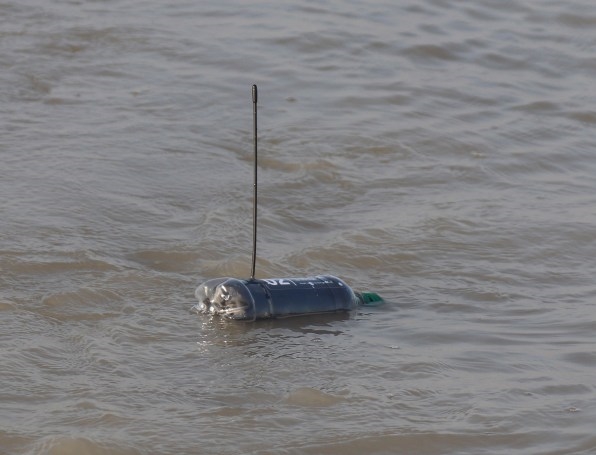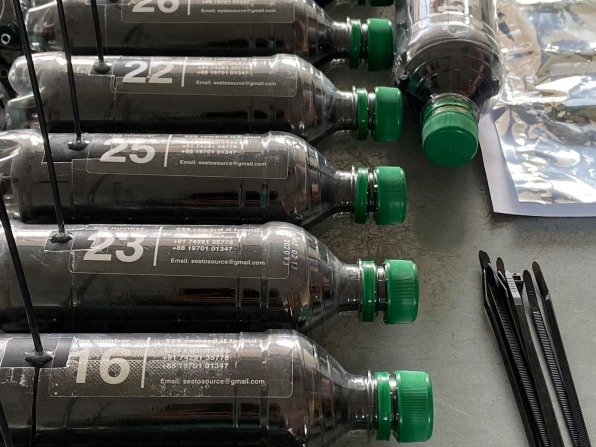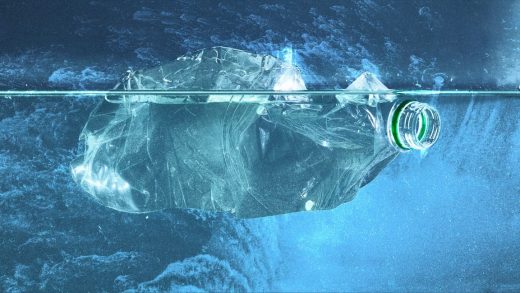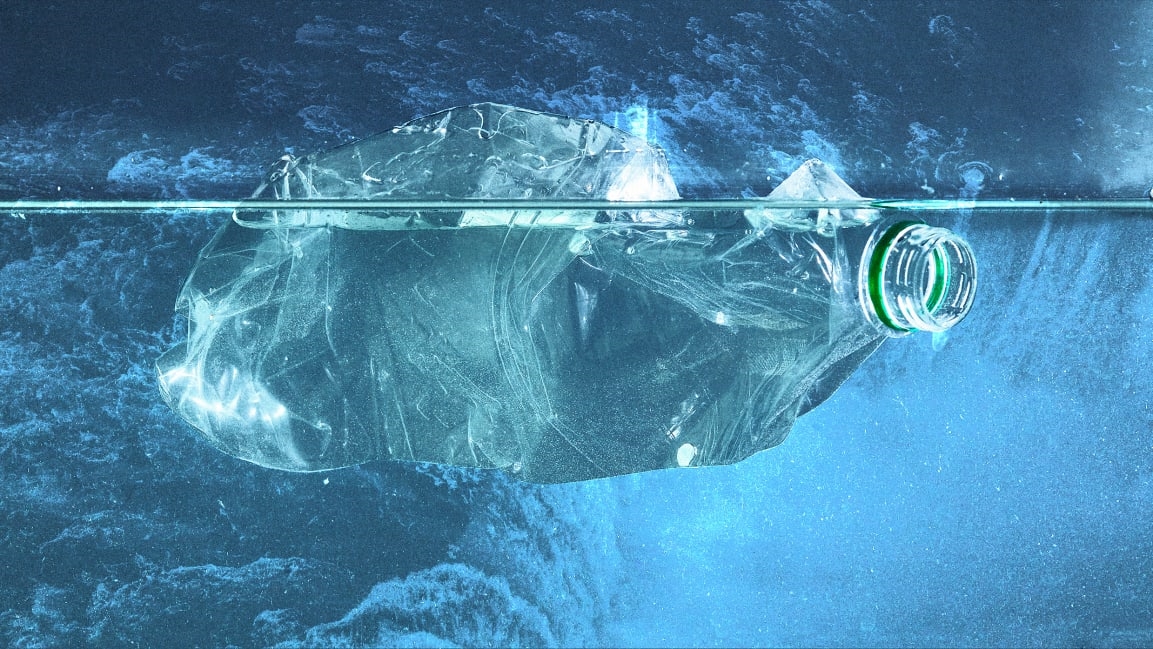How far does plastic float when it gets tossed in the ocean?
“It moved so rapidly,” says Emily Duncan, a post doc researcher at the Centre for Ecology and Conservation at the University of Exeter, and lead author of a study on this research published in PLOS ONE. “It shows that plastics are really a global issue. It doesn’t adhere to any geographic, political boundaries.”
The study was led by researchers at University of Exeter and the Zoological Society of London as part of the National Geographic Society’s Sea to Source project, which is researching ways to prevent plastic from entering the ocean from river systems, beginning with the Ganges in India. The Ganges is one of the world’s most polluted rivers, and a huge source of ocean plastic, including the single-use plastic beverage bottles that make up a large volume of ocean litter. (In the 2019 International Coastal Cleanup, volunteers recovered more than 1.8 million plastic beverage bottles from beaches and waterways across the world, and in at least the past 10 years of those cleanups, plastic bottles have been in the top five most collected items.)

Duncan’s previous research focused on how plastic pollution affects sea turtles. For years, researchers have used satellite tags to track sea turtles, and if you can track a sea turtle and find out where it goes, Duncan thought, why can’t you track a plastic bottle? The team put lightweight GPS and satellite tags, inside a protective casing, which then went inside the plastic bottles. The casing replicated the buoyancy of a bottle that would still be about half full. (With technology always getting smaller and lighter, Duncan hopes in the future to track even lighter debris, like food wrappers.)
Researchers released 25 500 milliliter bottles in the Ganges and the Bay of Bengal, which opens into the Indian Ocean, and tracked the bottles using open-source tracking software. Many of the bottles released in the river moved in stages, getting stuck on their way downstream. Some got entangled in fishing gear, some were removed by people who picked them up, and some were trapped on beaches. The longest distance tracked was a bottle dropped in the Bay of Bengal that moved 1,768 miles in 94 days, traveling along the west coast of India. Of the bottles dropped in the Ganges, the farthest journey was more than 500 miles.

Environmentalists already know that rivers are a major source of ocean plastic, so it seems obvious that the bottles would end up in the ocean. But this study reveals just how fast this pollution moves. “It shows us [plastic] has the ability, once in the aquatic environments, to move very rapidly, so we really need to stop this from the source which is the land,” Duncan says. It could also help inform the global models of plastic pollution by factoring in information on how much the wind or ocean current affects plastic bottles.
Seeing where plastic pollution goes is a first step in better understanding it, and it also might help people picture the scale of this issue. Trying to imagine 1.8 million plastic beverage bottles cleaned up from beaches can be difficult, but tracking one bottle moving down a river is potentially easier to grasp. “We hope in the future it can be used as an educational tool. A group of school children could have ownership over their bottle and really understand how far it’s going,” she says. “We hope it can be a tool.” Since the researchers used open source technology, they also plan to create an open source platform where people can follow individual bottles online.
There is a bit of an irony in intentionally putting plastic bottles into the river in order to better understand and eventually curb plastic pollution, and Duncan says they were keenly aware of this. At every location where researchers deployed a tracked bottled, they also did a beach clean up. “The net amount of plastic we have taken out of the system is much larger than what is contained in these tags,” she says. And she believes the knowledge gained was worth the litter. “Going back to my background in sea turtle research, the satellite tracking of these animals has helped us to begin to answer so many questions,” she says “It’s very similar to plastic pollution. We really need to understand how plastic moves and where it moves to.”
(16)



